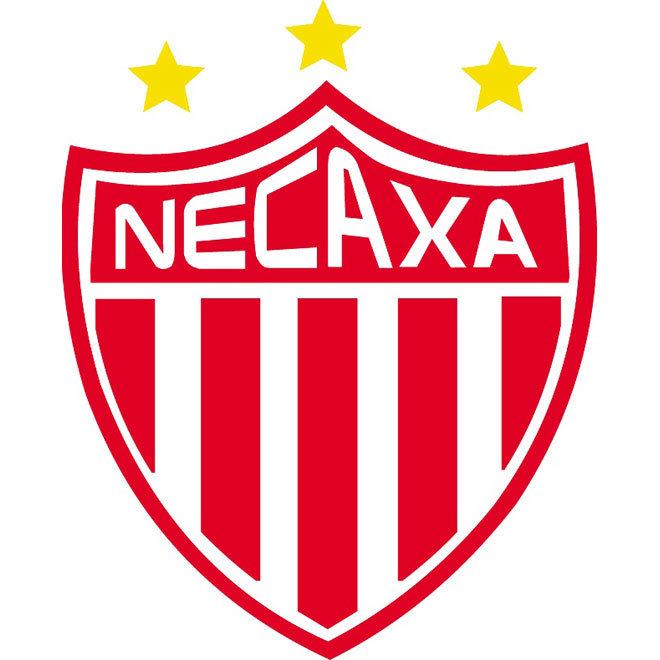Ground Capacity 23,851 Apertura 2016 7th (Semi-finals) | Owner Ernesto Tinajero Founded 1923 | |
 | ||
Full name Impulsora del Deportivo Necaxa S.A. de C.V. Nickname(s) Los Rayos" (The thunderbolts)Los Electricistas (The Electricians)Los Once Hermanos (The Eleven Brothers)El Equipo de la Década (The Team of the Decade) Ground Estadio VictoriaAguascalientes City, Aguascalientes, Mexico | ||
91 a os del club necaxa un paso rapido por la historia
Impulsora del Deportivo Necaxa S.A. de C.V. ([ne.ˈkak.sa]); often simply known as Club Necaxa, is a Mexican football club in Liga MX based in the city of Aguascalientes. It plays in the Estadio Victoria. Necaxa is a non membership-based club, with more than 35,000 members outside Mexico.
Contents
- 91 a os del club necaxa un paso rapido por la historia
- Carlos l pez de silanes nuevo director deportivo de club necaxa
- Foundation Light and Power Company Luz y Fuerza 18991920
- Late 1930s Once Hermanos
- References
Carlos l pez de silanes nuevo director deportivo de club necaxa
Foundation (Light and Power Company, Luz y Fuerza) (1899–1920)
Necaxa was founded on 21 August 1923. It began when Englishman William H. Frasser, an engineer and owner of the Light and Power Company (Compañía de Luz y Fuerza ) in the state of Puebla, founded a football team. Frasser, as a student was a football player in the United Kingdom and was a strong advocate for the sport. Frasser consolidated the teams of the Light and Power Company and the Street Car operators Compañia de Luz y Fuerza and Tranvías into one.
Frasser supported the newly merged team with company revenue and funds. In addition, the Light and Power Company offered steady employment to players in an era where half of the players were playing at an amateur level. However, the Mexican football federation did not allow teams to be named after private companies, so the team changed its name to Necaxa, after the Necaxa River that was close to the electrical plant.
Historians assert that the colors and Necaxa's crest came from following the arrival of the Cornish community in Mexico, the Cornish community flourished and stayed in Central Mexico until the Mexican Revolution in 1910. Although the Cornish community in Mexico broadly returned to Cornwall, they left a cultural legacy; Cornish pasties, Cornish mining museums, a Cornish Mexican Cultural Society and football, are part of the local heritage and tradition in and around Mineral del Monte. In 1923, it was decided Necaxa team would field players regardless of race and nationality.
In that era, the team was called "Los Electricistas" (The Electricians). The team adopted the colors red and white as their team colors, earning them the nickname "Los roji-blancos". During this period, the oldest rivalry in Mexican football began to form, between Necaxa and Atlante F.C..
On 14 September 1930, having already been a 2-time champion of the amateur Copa Eliminatoria, Necaxa inaugurated its stadium named Parque Necaxa, located on the banks of La Piedad River on land donated by the Frasser Family. The stadium had a maximum capacity for 15,000 fans, and was known for its clock tower displaying the team's emblem.
Necaxa, in the early days of Mexican Football were members of the Mexican League Amateur Football Association Liga Mexicana de Fútbol Amateur Association, composed of Atlante F.C., Club España, Germania FV, and seasoned and disciplined team Asturias. Necaxa won championships during the 1932–33, 1934–35, 1936–37, 1937–38. seasons.
The following season after the stadium's opening, players such as Hilario López and Luis Pérez contributed to the team's success, leading Necaxa to the League final against Atlante, losing 3–2.
But Necaxa would rebound the next season, smashing Atlante by a 9–0 score. The line-up Necaxa used on that day was the following:
During this decade, Necaxa became one of the most popular teams in Mexico. Under the direction of the Ernst Pauler, Necaxa, in one season of play (1935–36), the team dominated and won titles ranging from Champion of Champions, Champion of the Liga Mayor De La Ciudad, National Champion of League, National Champion and Central American Champions. Their last title was the Central American Championship in El Salvador.
1935 Caribbean games lineup
"Paco" Martinez de la Vega, an aficionado, would coin the surname for the very first time" Campeonismo" or "Championshipism" in which Necaxa's would later use to justify their achievements and titles.
Late 1930s: Once Hermanos
Following the Mexican Revolution, the late 1930s represented Necaxa's most successful all-Mexican team. The Once Hermanos or "Eleven Brothers" period was coined in that era due to that team's ability to work as a team. The Necaxa team, in 1936, won the Copa México.
In that same year, a talented striker gained popularity within Necaxa's benches. Even though he was not one of the original "once hermano" or "eleventh brother" Horacio Casarìn, was a great player in the Mexican league national ranks. His success took him to the big screen in Mexican Cinema.
Necaxa's "Once Hermanos" lineup
